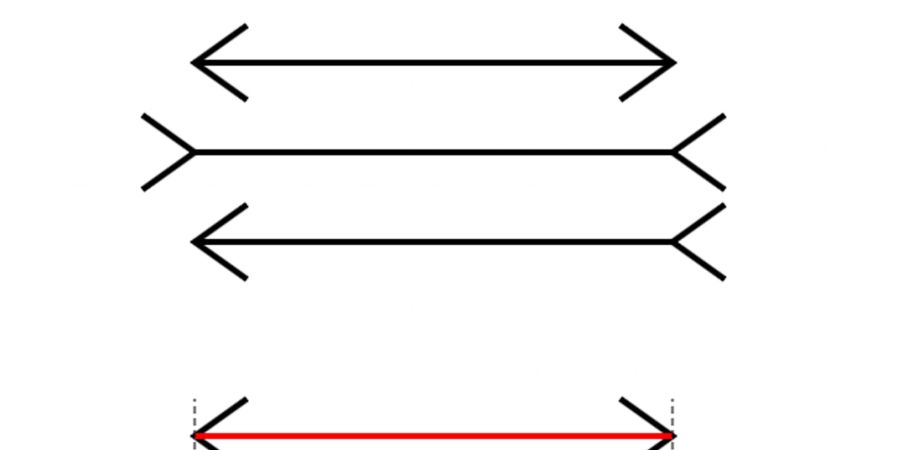

The Muller-Lyer deception is a notable optical deception wherein two lines of a similar length have all the earmarks of being of various lengths. The deception was first made by a German clinician named Franz Carl Muller-Lyer in 1889.
In the top portion of picture above, which line seems the longest? For the vast majority, the line with the blades of the bolt projecting outward (the middle line) gives off an impression of being the longest, while the line with the bolt balances pointing inwards seems more limited. While your eyes could see you that line in the center is the longest, the shafts of the two lines are the very same length, as displayed in the base portion of the image.Optical deceptions can tomfoolery and interest. Yet, they additionally act as a significant device for scientists. By taking a gander at how we see these deceptions, we can become familiar with how the mind and perceptual interaction work. Nonetheless, specialists don't necessarily settle on precisely exact thing aims optical deceptions, just like with the Muller-Lyer deception.
The Size Constancy Explanation
As per clinician Richard Gregory, this deception happens in view of a misapplication of size consistency scaling. Generally speaking, size consistency permits us to see objects in a steady manner by bringing distance into account.2
In the three-layered world, this standard permits us to see a tall individual as tall whether they are remaining close to us or off somewhere far off. At the point when we apply this equivalent rule to two-layered objects, Gregory proposes, blunders can result.
Different scientists fight that Gregory's clarification doesn't adequately make sense of this deception. For instance, different adaptations of the Muller-Lyer deception use two circles toward the finish of the shaft. While there are no profundity signs, the deception actually happens. It has additionally been shown the way that the deception could in fact happen while review three-layered objects.
The Depth Cue Explanation
Profundity assumes a significant part in our capacity to pass judgment on distance. One clarification of the Muller-Lyer deception is that our minds see the profundities of the two shafts in view of profundity prompts. Whenever the balances are pointing in toward the shaft of the line, we see it as slanting endlessly similar as the edge of a structure. This profundity signal leads us to see that line as further away and consequently more limited.
Whenever the balances are pointing outward away from the line, it seems to be the side of a room inclining toward the watcher. This profundity prompt persuades us to think that this line is nearer and consequently longer.
The Conflicting Cues Explanation
An elective clarification proposed by R. H. Day recommends that the Muller-Lyer deception happens due to clashing signs. Our capacity to see the length of the lines relies upon the genuine length of the actual line and the general length of the figure.3 Since the complete length of one figure is longer than the length of the actual lines, it causes the line with the outward-confronting blades to be viewed as longer.
Analysts from the University of London recommend that the deception exhibits how the mind reflexively passes judgment on data about length and size prior to anything else.4
"Numerous visual deceptions may be so successful on the grounds that they tap into how the human cerebrum reflexively processes data. In the event that a deception can catch consideration along these lines, then this proposes that the cerebrum processes these visual signs quickly and unwittingly


